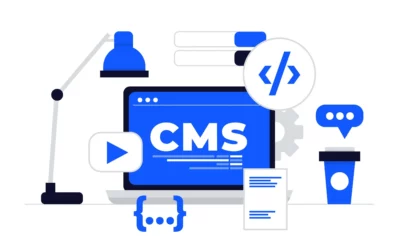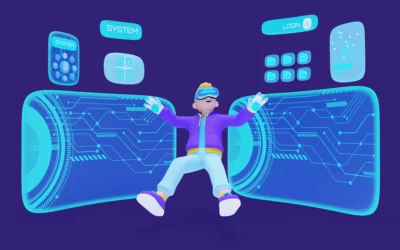Introduction
End-to-end (E2E) testing in Agile is a crucial aspect of the software development process, ensuring that the entire application functions as intended from start to finish. In Agile methodologies, where development is iterative and incremental, E2E testing plays a significant role in validating the overall system functionality and user experience. Here are key considerations for implementing End-to-End testing in an Agile environment.
Early Involvement
Start planning E2E tests early in the development cycle. Collaboration between developers, testers, and other stakeholders is essential to understand the requirements and design comprehensive test scenarios.
User Stories and Acceptance Criteria
E2E testing should align with user stories and acceptance criteria. Each user story should have corresponding E2E test cases to validate that the feature or functionality meets the specified requirements.
Automation
Automate E2E tests to increase efficiency and repeatability. Automation helps in quickly running tests across various scenarios and ensures that the software remains functional as new features are added.
Continuous Integration (CI) and Continuous Deployment (CD)
Integrate E2E tests into the CI/CD pipeline to run tests automatically with each code change. This facilitates early detection of defects and ensures that the software is continuously tested throughout the development process.
Scalability
E2E tests should be scalable to accommodate the growing complexity of the application. As the system evolves, the test suite needs to expand to cover new functionalities while maintaining backward compatibility.
Isolation of Test Environments
Isolate test environments to mimic the production environment as closely as possible. This includes databases, server configurations, and third-party integrations. It helps identify issues related to environment-specific configurations.
Data Management
Manage test data effectively to ensure that tests are executed with consistent and reliable data. Data setup and cleanup processes should be automated to streamline testing and avoid dependencies on specific data states.
Cross-Browser and Cross-Device Testing
Perform E2E testing across different browsers and devices to ensure a consistent user experience. This is particularly important in Agile development, where rapid releases may introduce changes that impact various platforms.
Feedback Loop
Establish a feedback loop between developers and testers. Timely communication of test results and issues discovered during E2E testing helps teams address problems promptly and maintain a fast development pace.
Documentation
Document E2E test cases, test data, and test results. Clear documentation ensures that the testing process is well-documented, making it easier for team members to understand and reproduce test scenarios.
Adaptability
Agile environments are characterized by change. E2E testing processes should be adaptable to accommodate evolving requirements and priorities. Regularly reassess and update the test suite to reflect the current state of the application.
In summary, incorporating End-to-End testing into Agile development requires careful planning, collaboration, and automation. It is an integral part of the quality assurance process, helping teams deliver reliable software with each iteration.
Who can perform E2E Testing?
End-to-end (E2E) testing involves validating the entire application flow to ensure that all components work together as intended. Various team members may be involved in E2E testing, depending on the organization’s structure and practices. Here are key roles that may perform E2E testing:
Quality Assurance (QA) Engineers
QA engineers are often responsible for designing, implementing, and executing E2E tests. They collaborate with developers and other stakeholders to create comprehensive test scenarios that cover the entire application workflow.
Test Automation Engineers
Test automation engineers specialize in creating automated test scripts. They play a crucial role in E2E testing by automating repetitive and time-consuming test cases, enabling faster and more reliable testing during each development cycle.
Development Team
Developers can also be involved in E2E testing, especially during the early stages of feature development. They may perform preliminary testing to ensure that their components integrate seamlessly with the rest of the application.
Product Owners/Business Analysts
Product owners and business analysts may collaborate with QA engineers to define user stories and acceptance criteria, which are the basis for E2E test cases. Their input ensures that testing aligns with the business requirements and user expectations.
Specialized Testers
Depending on the nature of the application, specialized testers (e.g., security testers, performance testers) may contribute to E2E testing to ensure that non-functional aspects of the application, such as security and performance, are validated.
It’s essential for E2E testing to be a collaborative effort, with a focus on communication and shared responsibility among team members. Whether it’s manual testing by QA engineers or automated testing by test automation engineers, the goal is to verify that the entire system works cohesively and meets the specified requirements.
Benefits of end-to-end testing
End-to-end (E2E) testing provides numerous benefits in the software development lifecycle, helping to ensure the overall quality and reliability of a system. Here are some key advantages of incorporating E2E testing into your testing strategy:
Identifies Integration Issues
E2E testing verifies that all components of a system work together seamlessly. It helps identify integration issues early in the development process, ensuring that different modules or services can communicate and function as intended.
Validates System Functionality
E2E testing validates the functionality of the entire system from start to finish, ensuring that all features and user interactions work correctly. This is crucial for delivering a product that meets user requirements and expectations.
Ensures Data Flow
E2E testing verifies the flow of data across the entire application. This includes checking data integrity, data transfer between components, and the correctness of data processing throughout the system.
Enhances User Experience
By testing the end-to-end user journey, E2E testing helps ensure a smooth and consistent user experience. This is vital for applications where user satisfaction is a critical success factor.
Early Detection of Defects
E2E testing, when integrated into the continuous integration (CI) and continuous deployment (CD) pipeline, enables the early detection of defects. This allows teams to address issues promptly, reducing the cost and effort required for bug fixes.
Mitigates Risks
Comprehensive E2E testing helps mitigate the risk of critical issues in production. By identifying and addressing potential problems during the development phase, teams can release more reliable software.
Automation Improves Efficiency
Automating E2E tests improves testing efficiency by enabling quick and repeatable execution of test cases. Automated tests can be run regularly, providing rapid feedback on the health of the application with each code change.
Supports Agile Development
E2E testing aligns well with Agile development methodologies. It allows teams to validate user stories and acceptance criteria, ensuring that new features do not negatively impact existing functionality.
Enhances Regression Testing
E2E tests contribute to comprehensive regression testing. As the application evolves, running end-to-end tests helps ensure that new changes do not introduce regressions or break existing features.
Facilitates Continuous Delivery
Integrating E2E testing into CI/CD pipelines supports continuous delivery practices. Automated E2E tests can be triggered automatically, providing confidence in the quality of each release.
Improves Collaboration
E2E testing encourages collaboration between development, testing, and other stakeholders. Teams work together to define test scenarios, ensuring a shared understanding of the application’s behavior.
Increases Customer Satisfaction
By delivering a reliable and functionally complete product, E2E testing contributes to increased customer satisfaction. Users can trust that the software will perform as expected, leading to positive experiences.
In summary, E2E testing is a critical component of a comprehensive testing strategy, offering benefits that span from early defect detection to improved user satisfaction. Whether performed manually or automated, E2E testing plays a key role in delivering high-quality software.





